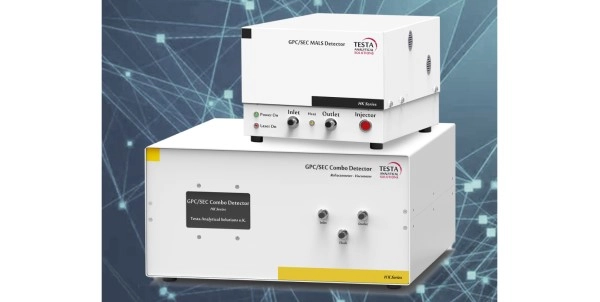Trinity Is a New System for GPC/SEC
New triple detector for GPC/SEC from Testa Analytical Solutions
TESTA Analytical announce Trinity—a powerful new
triple detector for Gel Permeation Chromatography / Size Exclusion
Chromatography (GPC/SEC). Triple Detection GPC/SEC is a gold standard
technique for the complete and accurate characterization of macromolecules
including proteins, polysaccharides, and synthetic polymers. Most often the
technique combines both light scattering and viscometer detectors with a
refractive index (RI) detector to deliver invaluable molecular weight and
structure information to researchers. Drawing upon decades of GPC/SEC technological
innovation, TESTA Analytical has developed a system capable of unlocking the
secrets of even the most complex synthetic polymers and natural macromolecules.
The Trinity triple detector combines high-performance chromatographic detector
technologies and powerful, yet easy to use software into an advanced triple
detector GPC/SEC system. When the focus of your investigation is not limited
to molecular weights but needs to delve deeper into understanding the physical
structure of a compound then the powerful combination of Differential
Refractive Index (DRI), Multi-Angle Light Scattering (MALS) and Viscometer
provided by Trinity is simply unbeatable. The Trinity triple detector delivers
absolute values for molecular weights plus absolute intrinsic viscosity and
precise Mark-Howink coefficient data enabling you to unlock information about
both chain flexibility and molecular density. As a result, your determination
of macromolecular branching can be based on solid data rather than assumed or
projected data, opening the way to a deeper understanding of the macromolecule
under study. Each detector in the Trinity has independent
temperature control to ensure that high levels of precision and reproducibility
can easily be achieved from one day to the next. This powerful triple detector
GPC/SEC platform is supported by a powerful software suite that combines highly
intuitive operation with all the necessary tools to generate and present
results from the collected raw data.










